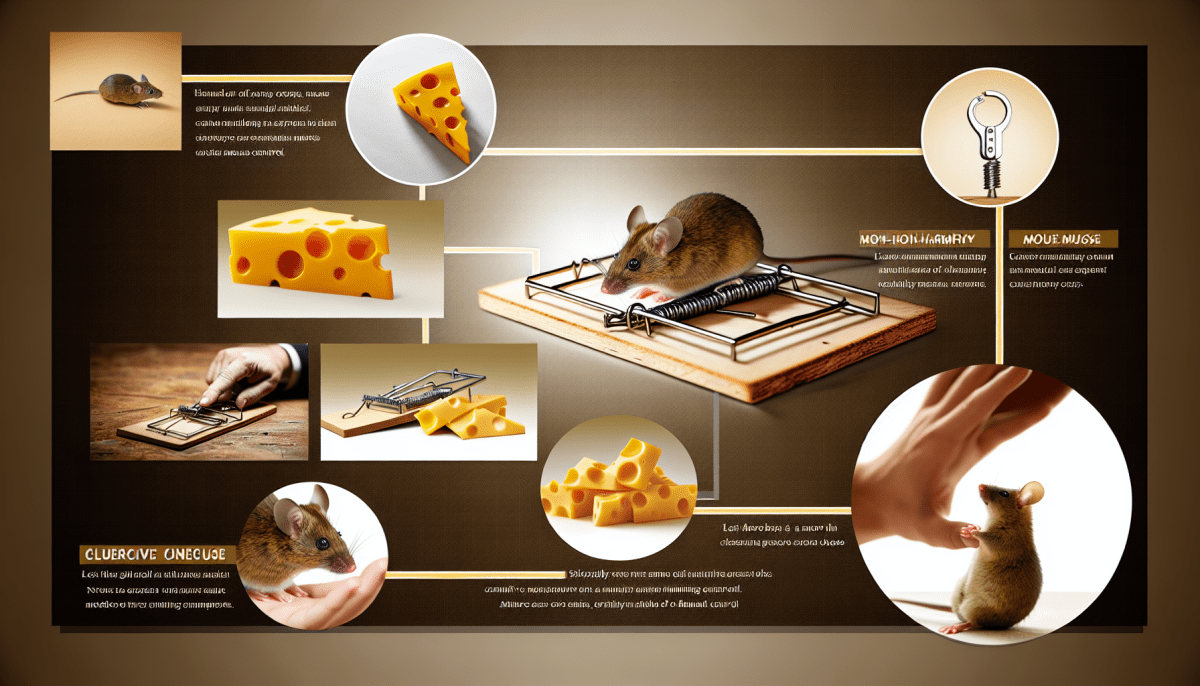Understanding mouse behavior and habits is super important for effective mouse control. These little critters are not just pesky invaders; they have specific routines and preferences that can help you outsmart them. By knowing what attracts mice and how they move around your space, you can take steps to keep them away.
Mice are typically nocturnal, meaning they're most active at night when it's quiet. They like to sneak around and forage for food, so it's essential to eliminate any accessible snacks. Make sure to store food in airtight containers and keep your kitchen tidy. A clean space goes a long way in making it less inviting for these little intruders.
Another thing to keep in mind is that mice are amazing climbers and can squeeze through tiny gaps. They usually make nests in secluded places like attics, behind appliances, or under furniture. To maintain good mouse control, seal up any cracks or holes in your home’s walls, foundation, and around doors or windows to diminish their hiding spots.
Lastly, mice are social animals and often stick to their family groups. This means if you spot one mouse, there are likely more nearby. Keeping a close eye on mouse traps and regularly checking for signs like droppings or chew marks can help you act quickly, preventing a small problem from turning into a bigger one. With some vigilance and these simple strategies, you can effectively manage any mouse situation you might encounter.
- Choosing the Right Mouse Control Method
When it comes to mouse control, picking the right method can make a huge difference in your user experience. There are a few different ways to manage your mouse, and each has its own perks. The key is to choose the one that feels most comfortable for you!
One popular option is the traditional mouse. It’s straightforward, often has extra buttons for quick access to tools, and works well for those who prefer a familiar feel. If you're doing a lot of clicking and dragging, this can be a solid choice. Just make sure it fits comfortably in your hand!
For those who want a bit more flexibility, consider a trackpad. Many laptops come equipped with them, and you can also find standalone versions. They allow for gestures like pinch-to-zoom and swiping, which can speed things up when you're navigating your screen. However, some people find them less precise than a mouse, so try it out to see how you feel.
If you’re looking for something innovative, check out a stylus or a graphic pen tablet. These devices are fantastic for artists or anyone who works with detailed graphics. They offer precision and control that’s hard to match with a standard mouse. Plus, they can be really fun to use!
Ultimately, your mouse control method should fit your personal style and the tasks you often do. Don’t hesitate to test out different options until you find the one that works best for you. Happy clicking!
- Essential Tools for Mouse Management
When it comes to mouse control, having the right tools makes all the difference. Whether you’re dealing with a few pesky visitors or a more serious infestation, there are essential tools that can help you manage the situation effectively. Here’s a friendly guide to some of the must-haves for successful mouse management.
1. Traps: Traps are your first line of defense. You can choose from snap traps, which are quick and humane, or live traps, which allow you to catch mice without harming them. Place them in areas where you’ve noticed activity, like along walls or near food sources.
2. Bait Stations: If you’re looking for a method that requires less frequent checking, bait stations might be your best bet. These sealed containers hold bait inside, making it safe for your pets and kids. Just remember to check them regularly to see if they've done their job!
3. Rodent Repellents: Sometimes prevention is the key to effective mouse control. Natural repellents, like peppermint oil or commercial sprays, can deter mice from entering your space. Spray these around entry points or areas where you suspect activity to keep those little critters at bay.
4. Sealants: Don’t forget about sealing any gaps or cracks in your home. Rodents can squeeze through some surprisingly small spaces. Use caulk and steel wool to block their entry points—this simple step can save you a lot of hassle down the road.
Equipped with these essential tools, you’ll be well on your way to managing your mouse problem effectively. Remember, a combination of tactics usually works best, so don’t hesitate to use what fits your situation!
- Preventing Future Mouse Infestations
Once you've dealt with a mouse problem, the last thing you want is for it to happen again. Preventing future mouse infestations comes down to being proactive and making a few simple changes around your home. Here are some effective mouse control tips to keep those unwanted guests at bay.
First off, let's talk about sealing up any entry points. Mice can squeeze through the tiniest cracks and gaps, so take a good look around your home. Use materials like steel wool or caulk to fill holes around windows, doors, and utility lines. Remember, if you can stick a pencil through it, a mouse can too!
Next, consider your food storage. Mice are on the lookout for easy meals, so keep all food sealed in airtight containers. This applies not just to pantry items but also pet food. Storing your food properly can be a game-changer for mouse control.
Don't forget about cleanliness! Regularly clean up crumbs and spills, and make sure to keep your kitchen tidy. Even a small leftover piece of food can attract mice. Also, take out the trash frequently and use bins with tight-fitting lids.
Finally, think about the outside of your home. Mice love to hide and nest near bushes or tall grass. Keep your yard tidy by trimming back any overgrown plants. Also, avoid stacking firewood against your home, as this can provide a cozy spot for mice to settle in.



